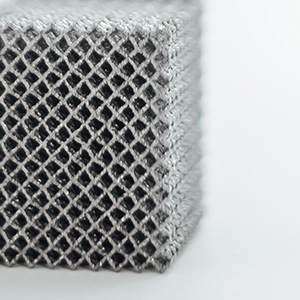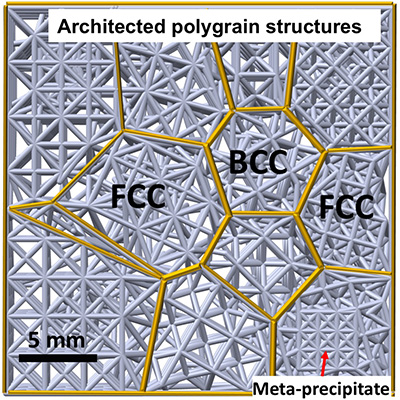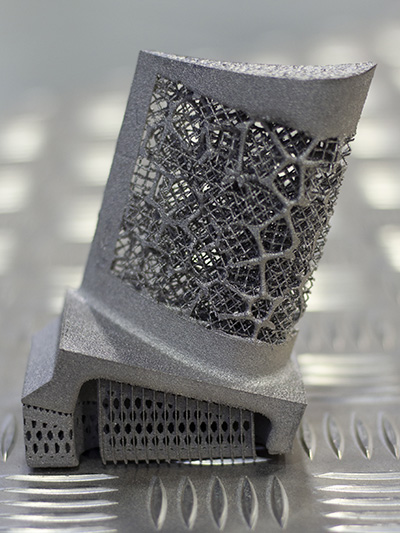A research led by Professor lain Todd from the Department of Materials Science and Engineering at the University of Sheffield has resulted in the development of new materials for additive manufacturing (AM).

By collaborating with researchers from Imperial College London, those experts studied how uniform lattices mimic the structure of a metallic single crystal.
Indeed, they replaced solid materials with lattice structures in order to obtain property combinations that are not accessible to conventional solids. The new property combinations are made possible thanks to the fact that lattice structures are lighter than the solid ones.
The problem with the lattice structures lies in the fact that their uniform layout with nodes conform to a regular array with the struts between the nodes all following common planes.
In fact, the nodes in the AM lattice are equivalent to the atoms in the single crystal and the struts are equivalent to the atomic bonds. In each of these structures, the atomic planes, or nodes are all perfectly aligned.

What happens in practice?
The truth is that, single crystal materials are not appropriate for all applications. If they can withstand deformation at extreme temperatures, their main limitation is related to their mechanical performance though and this can be seen in 3D printed parts with a uniform lattice structure.
When the structure is put into compression, once the force is sufficient to cause permanent deformation, the lattice shears along one or more of the planes of nodes. With nothing to inhibit this shearing, the collapse becomes catastrophic.

“In polycrystalline materials – those with many crystals – the alignment of the atomic planes is random, so when a shear force is in a particular direction, a crack will slow down or stop when it meets a crystal where the atoms are aligned differently from the crystal in which the crack initiated. Moreover, it is possible to introduce different materials in the form of phases, precipitates or inclusions used to strengthen the materials; these materials also help to inhibit crack propagation.
Through the computer modelling of atomic structures, scaling them up and creating meso-structures based on polycrystalline materials, engineers are transforming the way that materials are designed, for which the name ‘meta-crystals’ has been coined.”
For further information about 3D Printing, follow us on our social networks and subscribe to our newsletter! Images via University of Sheffield
Would you like to be featured in the next issue of our digital magazine? Send us an email at contact@3dadept.com






